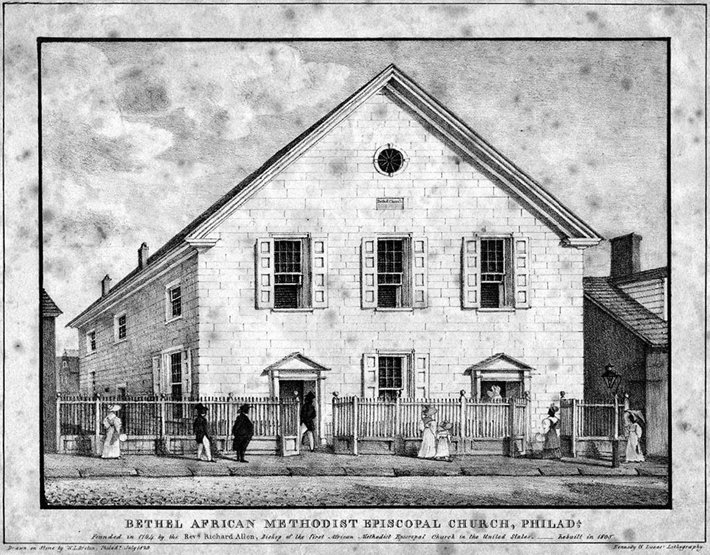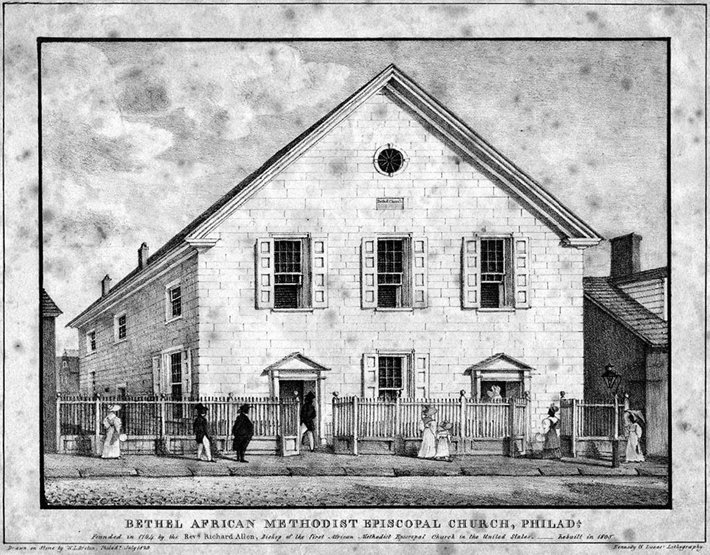
Every year in February, National Black History Month honors and celebrates the achievements of African Americans, paying tribute to their seminal role in American history. Because African American history is steeped in racism, no appreciation of Black History Month can be complete without recognizing the unique and lasting contributions of two former Delaware slaves turned preachers, Richard Allen and Absalom Jones, who founded the African Methodist Episcopal Church, long an anchor and leader in the African American community.
Lifelong friends, Allen and Absalom founded the Free African Society in 1787, a social, political and humanitarian organization considered to be the first African American mutual-aid society. It was dedicated to helping widows and orphans, assisting sick African Americans and offering burial expenses to community members. Allen and Absalom then went on to create the African Episcopal Church of St. Thomas.
Allen and Absalom were lay preachers at the St. George’s Methodist Episcopal Church in Philadelphia. Their evangelism was so successful that the church’s congregation grew ten-fold. That resulted in racial tensions that climaxed one day in their historic walkout from the church along with a group of Black worshipers in protest against segregation in the house of God.
In 1787, the two founded the African Methodist Episcopal Church (AMEC), an independent denomination—the first independent Black institution.
In his best-selling 2021 book, The Black Church: This is Our Story, This is Our Song, Harvard historian and cultural critic Henry Louis Gates Jr., quotes Vashti Murphy McKenzie, the first woman bishop in the AMEC, explaining why church founders included the word “African” in the church’s name:
“Because that’s where we came from,” Murphy says, “It’s the motherland. So Africa and African Methodist Episcopal denotes our African descent, our African heritage. It’s to honor our African heritage.”
In 1800, Jones led a group of Africans who escaped slavery and were living in slavery-free Philadelphia, Pennsylvania, in a petition to the U.S. Congress to repeal the 1793 Fugitive Slave Act that allowed former slaves to be abducted and returned to slavery. The petition also called for Congress to end the vigorous slave trade whereby Africans were shipped to the United States and forced into slavery.
In a telling vote that reveals the extent of endemic racism in the new country, the U.S. House of Representatives rejected the petition by an 85-1 vote. The lone dissenter was Massachusetts Congressman George Thacher, who condemned slavery as “a cancer of immense magnitude, that would sometime destroy the body politic, except a proper legislation should prevent the evil.”
The AMEC has played a significant role in educating African Americans. Several black colleges and universities have historically been affiliated with the church, which has three seminaries. Today, the AMEC has members in 39 countries on five continents. Total membership stands at nearly 2.5 million. The Mission of the AME Church is to minister to the social, spiritual, and physical development of all people.
______________
From its beginnings, the Church of Scientology has recognized that freedom of religion is a fundamental human right. In a world where conflicts are often traceable to intolerance of others’ religious beliefs and practices, the Church has, for more than 50 years, made the preservation of religious liberty an overriding concern.
The Church of Scientology publishes this blog to help create a better understanding of the freedom of religion and belief and provide news on religious freedom and issues affecting this freedom around the world.
The Founder of the Scientology religion is L. Ron Hubbard and Mr. David Miscavige is the religion’s ecclesiastical leader.
DOWNLOAD THE WHITEPAPER

